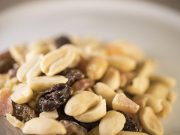Eating a balanced diet can often feel like a daunting task, especially with the myriad of food choices and dietary advice available today. However, ensuring that all essential food groups are part of your meals doesn’t have to be overwhelming. This article is here to guide you through the process with empathy and clarity, acknowledging the challenges you may face while offering practical tips to make balanced eating achievable. By understanding how to incorporate grains, proteins, fruits, vegetables, and dairy into your daily meals, you can nurture your body and mind, fostering a healthier lifestyle without sacrificing enjoyment or convenience. Let’s embark on this journey together, exploring simple strategies to create nutritious and satisfying meals that cater to your individual needs and preferences.
Understanding the Importance of Balanced Nutrition
Achieving a balanced diet doesn’t have to be complicated. It’s about making sure you incorporate all essential food groups into your meals, which ensures your body receives the diverse nutrients it needs to function optimally. Here’s a simple guide to help you:
- Fruits and Vegetables: Aim for a variety of colors and types. Think leafy greens, berries, and citrus fruits.
- Proteins: Include both plant-based sources like beans and nuts, and animal-based sources such as fish, poultry, and eggs.
- Whole Grains: Opt for quinoa, brown rice, or whole wheat bread over refined grains to boost fiber intake.
- Dairy or Dairy Alternatives: Choose low-fat options or fortified alternatives like almond or soy milk.
- Fats: Use healthy fats from avocados, olive oil, and seeds to keep your heart healthy.
To visualize how these groups can be balanced in your meals, consider the following sample meal plan:
| Meal | Food Group | Example |
|---|---|---|
| Breakfast | Whole Grains, Dairy | Oatmeal with almond milk and berries |
| Lunch | Proteins, Vegetables | Grilled chicken salad with mixed greens |
| Dinner | Whole Grains, Proteins, Vegetables | Quinoa with black beans and roasted veggies |
| Snack | Fruits, Fats | Sliced apple with peanut butter |
By thoughtfully selecting foods from each category, you’ll not only enjoy a variety of flavors and textures but also support your health and well-being. Remember, moderation and variety are key!

Crafting Meals with Diverse Food Groups
Incorporating a variety of food groups into your meals is not only a way to ensure balanced nutrition but also a delightful journey of flavors and textures. Imagine each meal as a canvas, where you blend different colors and shapes to create a masterpiece of taste. Here’s how you can effortlessly mix and match to craft wholesome meals:
- Proteins: The building blocks of our bodies, proteins can be sourced from both plants and animals. Think lean meats, fish, beans, or tofu. For a quick protein fix, sprinkle some nuts or seeds over your dish.
- Vegetables: Aim to fill half your plate with colorful veggies. Whether it’s a vibrant stir-fry or a refreshing salad, vegetables bring fiber and essential vitamins to the table.
- Fruits: Perfect for a sweet finish or a zesty side. A handful of berries or a slice of citrus can brighten any meal and provide a boost of antioxidants.
- Grains: Choose whole grains like quinoa, brown rice, or whole-wheat pasta. They offer a satisfying texture and keep you full longer.
- Dairy or Alternatives: Whether it’s a dollop of yogurt or a splash of almond milk, this group adds creaminess and calcium.
To visualize this balance, here’s a simple meal idea:
| Food Group | Example |
|---|---|
| Protein | Grilled Chicken Breast |
| Vegetables | Steamed Broccoli and Carrots |
| Fruits | Fresh Orange Slices |
| Grains | Quinoa Salad |
| Dairy | Yogurt Dressing |

Practical Tips for Incorporating All Food Categories
- Start with a Balanced Plate: Aim for a variety of colors and textures in your meals. A typical plate should include about half vegetables and fruits, a quarter whole grains, and a quarter protein. This approach not only makes your meal more visually appealing but also ensures you’re getting a broad spectrum of nutrients.
- Mix and Match: Combine foods from different categories to create delightful and nutritious dishes. For instance, add nuts or seeds to your salad for a crunchy texture and a dose of healthy fats, or toss some beans into your pasta for added protein.
| Food Group | Examples | Incorporation Tips |
|---|---|---|
| Vegetables | Spinach, Carrots, Peppers | Add to smoothies or omelets |
| Fruits | Apples, Berries, Oranges | Use as snacks or dessert |
| Grains | Quinoa, Brown Rice, Oats | Swap refined grains with whole grains |
| Proteins | Chicken, Tofu, Lentils | Mix into salads or stir-fries |
| Dairy/Alternatives | Milk, Yogurt, Almond Milk | Use in smoothies or sauces |
- Experiment with New Recipes: Challenge yourself to try at least one new recipe each week that includes a food group you typically overlook. This can be a fun and rewarding way to expand your palate and culinary skills.
- Mindful Portions: While it’s essential to include all food groups, be mindful of portion sizes. Too much of even healthy foods can lead to imbalances. Use your hand as a guide: a fist for fruits and grains, a palm for proteins, and a thumb for fats.

Overcoming Common Challenges in Achieving Dietary Balance
- Time Constraints: One of the most common hurdles in maintaining a balanced diet is finding the time to plan and prepare meals. A great way to address this is by batch cooking on weekends or using meal delivery services that cater to balanced diets. You can also opt for quick-cooking ingredients like quinoa, canned beans, or frozen vegetables that allow for speedy meal preparation.
- Lack of Knowledge: Many people struggle with understanding which foods belong to which groups. To simplify, here’s a quick guide:
- Proteins: Chicken, tofu, beans
- Carbohydrates: Rice, bread, pasta
- Fruits: Apples, berries, bananas
- Vegetables: Spinach, carrots, broccoli
- Dairy: Milk, yogurt, cheese
- Budget Constraints: Eating a balanced diet doesn’t have to break the bank. Consider seasonal fruits and vegetables which are often cheaper and more nutrient-rich. Opt for whole grains in bulk and store-brand products. Here’s a simple comparison table to help you make cost-effective choices:
| Food Group | Budget-Friendly Option |
|---|---|
| Protein | Eggs, Lentils |
| Carbohydrates | Oats, Brown Rice |
| Fruits | Bananas, Apples |
| Vegetables | Carrots, Cabbage |
| Dairy | Yogurt, Milk |
Remember, small changes can make a big difference. Incorporating a diverse range of foods into your meals is a journey, not a sprint. Be patient with yourself as you explore and experiment with new ingredients and recipes.








































